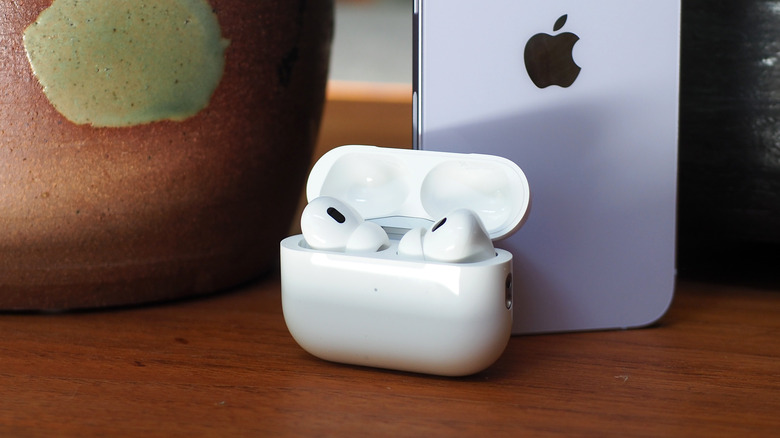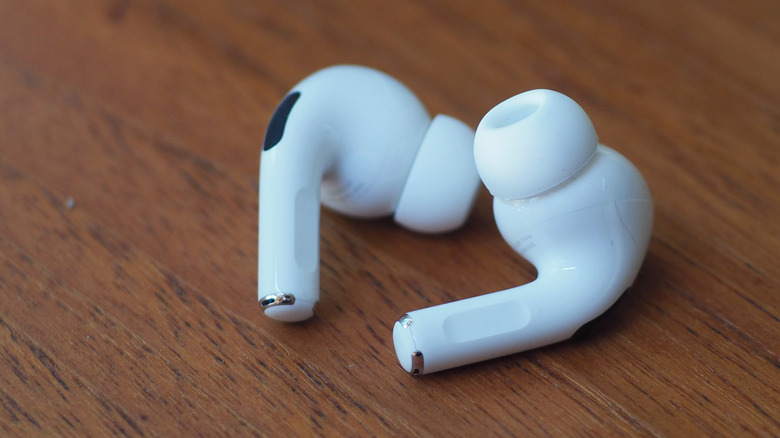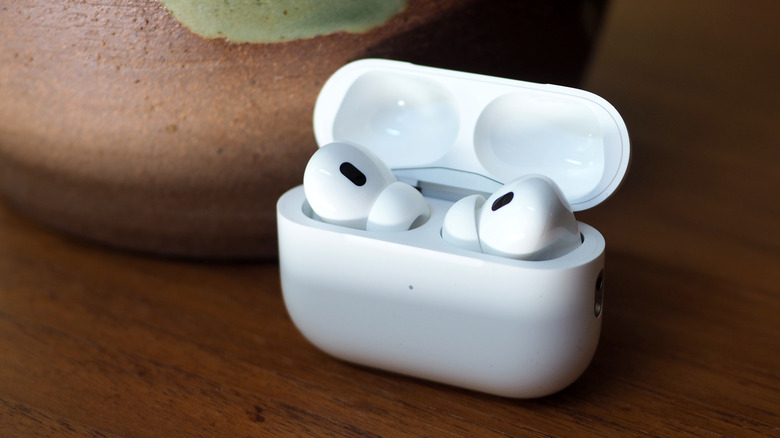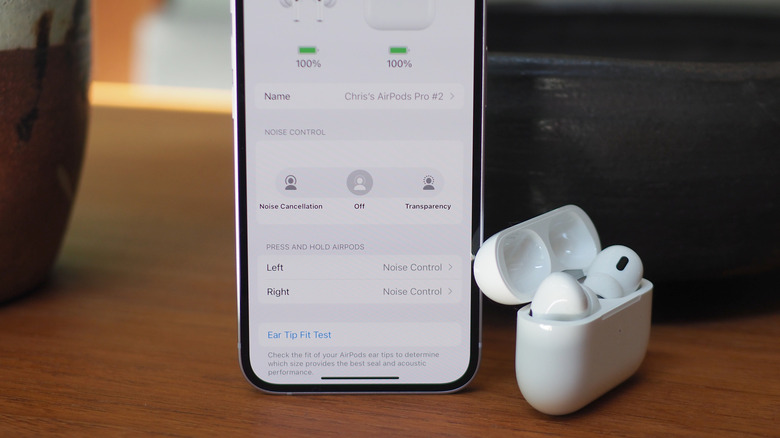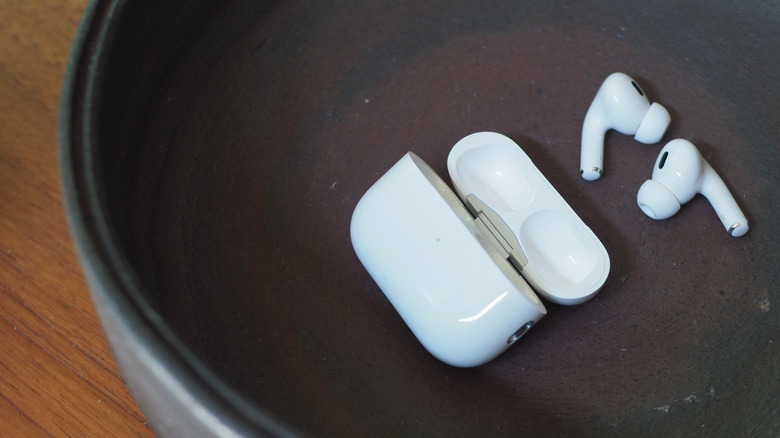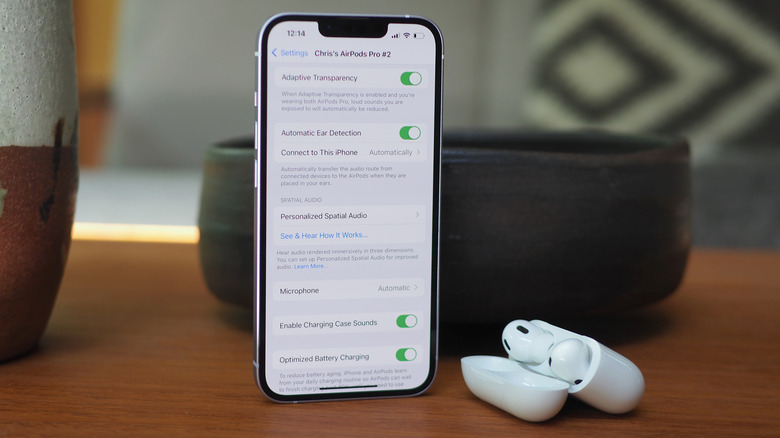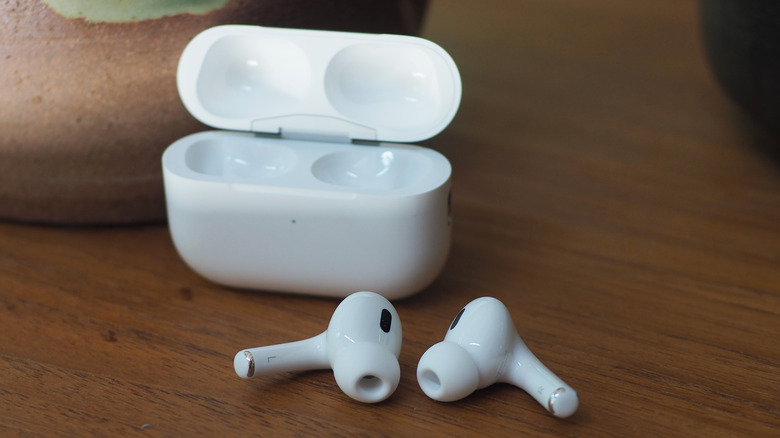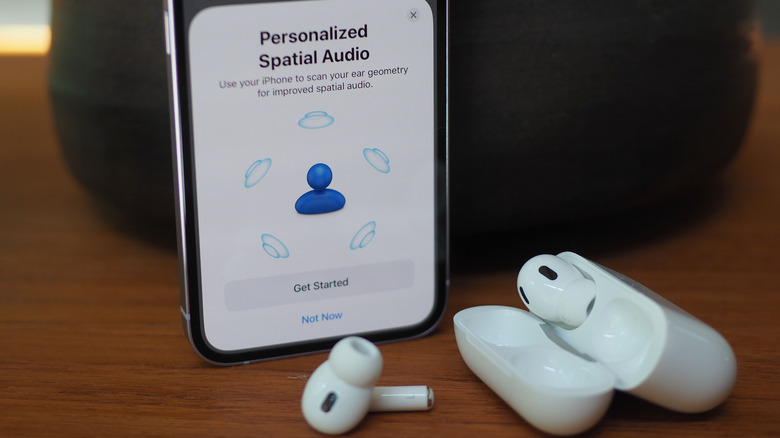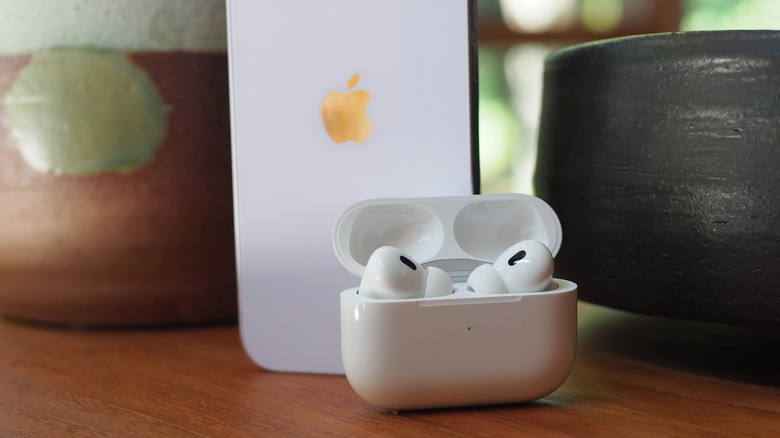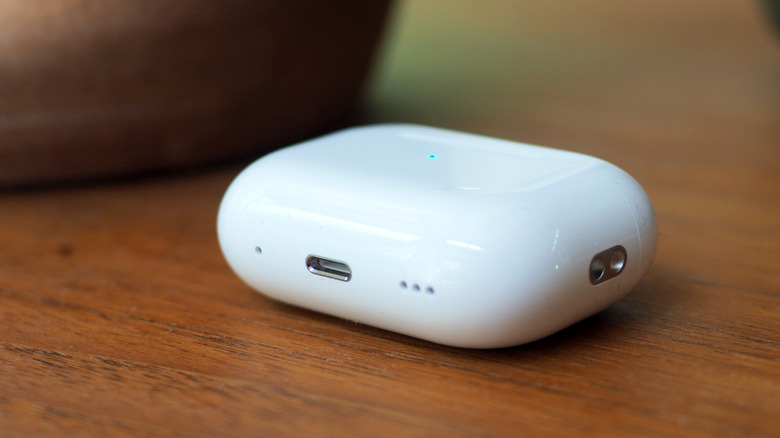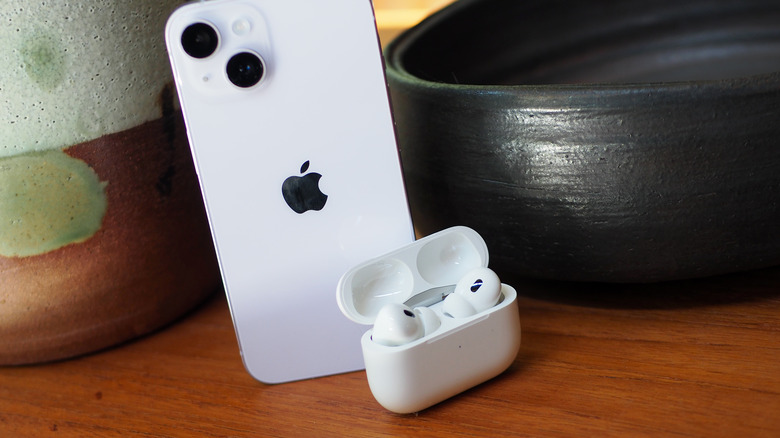Apple AirPods Pro (2022) Review: Refinement That's Not For Everybody
- Improved audio performance and battery life
- Active Noise Cancellation is excellent
- Case now fully supports Find My
- Spatial Audio still feels gimmicky
- Non-Apple people need not apply
We may receive a commission on purchases made from links.
Apple's second-generation AirPods Pro arrive when competition has never been fiercer. Plenty of wireless earbuds want that coveted spot in your ear, in many cases undercutting the $249 price of this 2022 refresh. What no rival can quite replicate, however, is the combination of homegrown chip expertise and tight integration with your iPhone, two factors Apple has doubled down on with the AirPods Pro 2.
At first glance, nobody is going to know you're wearing the second-generation AirPods Pro. The aesthetic remains a truncated riff on the originals, shorter in stem and chunkier in their white plastic bulb. The sensors have shifted, slightly, behind their gloss black lenses, and the new earbuds won't actually charge in the first generation case, but generally, you'd struggle to tell the difference.
Happily, that just means the key changes are inside, where they make more of an impact anyway. Central is the new Apple H2 chipset, a homegrown processor and Bluetooth radio that debuts in the second generation AirPods Pro. The promise is up to double the active noise cancellation performance, as well as improvements in audio and power consumption.
A little slide makes all the difference
Control is still primarily via Siri, in Apple's world, and via the touch-sensitive stem and your iPhone, for those of us who prefer not barking out orders. Freshly added is possibly the most frequent request, the ability to adjust the volume by swiping gently along the earbuds stem.
It's a delicate gesture, requiring stabilizing the back of the stem with the thumb and then dragging your fingertip as best you can along the short length of plastic. A mild blip in your ear tells you when you're being successful; I found the movement frustratingly tricky at first, right up until the point where it just clicked and became near-second nature.
A single squeeze continues to toggle play/pause, while two or three in rapid succession will skip forward or back through your playlist. Take an AirPod Pro out of your ear and the music stops; put it back in, and it resumes again. The usual multi-device support is conveniently present, all of your Apple devices are paired in one fell swoop as long as they're signed into the same Apple ID. Earbud rivals may try to match the quick switching between one set of AirPods Pro and different devices, but none quite achieve this intra-platform slickness.
A bump in music quality
For music, Apple is boasting a broader frequency range, which the company says is particularly good for pop, rock, hip-hop, and dance music. I've no complaints, certainly; the original AirPods Pro sounded great, and that carries through here. While I might prefer a little extra bass, it's a demand I have from most wireless earbuds (and, to be fair, there are limits to just what you can do in such a small package).
Calls use redesigned beam forming microphones, and sound as good as — or sometimes even better — than holding your iPhone to your ear. With iOS 16 you can even ask Siri to hang up the call for you, though it's worth noting that the person on the other end will hear you say that.
Active Noise Cancellation steps up its game
Then there's Active Noise Cancellation, or ANC, a party trick that once commanded hundreds of dollars but which now has been democratized — if not with equal capacity — across a wide range of price points. It's an arms race, and a subjective one, with Apple, Sony, Bose, and a host of others all attempting to out-oust environmental noise from the ears of their respective customers.
The Apple H2 is instrumental here, of course, providing what the Cupertino firm says is significantly more processing power — combined with more onboard memory — that can be used to run larger, more complex ANC models. That's half of the battle; the other portion is the models themselves, which Apple says are focused on the sort of environments users face most frequently. Plane cabins, urban streets, cafe hubbub, that sort of thing.
Faced with the sort of vaguely repetitive burble of background pest noise — like jet engines or traffic — and sure enough, the new AirPods Pro do seem to hold up better than their predecessors. Conversations, which by their unpredictable nature are trickier for ANC systems to dampen, are given a volume and clarity slash; throw in some low-level music and the sense of isolation is definitely improved.
Transparency mode is the real magic
The real magic, though, isn't so much the active noise cancellation — good though it is — but the Transparency mode. Effectively a way to pass through the sounds of the real world without requiring you to take out your AirPods, it's simple in theory but fiendishly tricky in practice.
At least, that's what other ANC earbuds makers would leave you believing. Transparency mode's usefulness lives and dies by the clarity and, for want of a better word, the "realness" of what's piped through. If it's crackly, tinny, or truncated at the top or low ends, then you won't want to use it.
The new AirPods Pro's Transparency mode is astonishing, to the point where at times I forgot I was wearing the earbuds altogether. If the aim here is a set of 'buds you can wear all day, switching between full ANC and this immersive pass-through mode, then Apple has nailed it.
Adaptive Transparency nudges AirPods Pro into safety
Manually switching, though, isn't your only option. As before, a long-squeeze of the AirPods Pro stem toggles between the two modes, or you can do it within the iOS settings instead. For 2022, Apple has also added Adaptive Transparency.
It's basically a protective mode, built on top of Transparency mode. Turned on by default, it listens out for particularly loud sounds — think along the lines of pneumatic drills, emergency vehicle sirens, or close fireworks — and then automatically tamps down on them so as to avoid ear damage. It'll also work at a concert, Apple says, or other places like job sites where you might ordinarily be encouraged to wear acoustic ear plugs.
What's key is that Adaptive Transparency isn't just muting everything, just reducing the most objectionable sounds. Similarly important, it reacts fast. Apple says that's in part down to the extra onboard processing power of the new chipset, making the AirPods Pro swift enough to adjust even before you yourself notice the loud sounds. If you've got an Apple Watch you'll eventually be able to see the degree of noise reduction in real-time.
It can't stop sound entirely, of course. You'll still hear sirens, or music, or anything else, which is probably for the best. Apple is just slicing off the most potentially-damaging volume.
Sizes to suit more ears
For it all to work — active noise cancellation in all its flavors here — you'll need a good fit in your ears. Apple has added an extra set of eartips, with an extra-small (XS) pair included alongside the existing small, medium, and large, in the hope of fitting more wearers.
I struggle, frankly, with in-ear buds like these. While I can eventually get them to stay in place in my recalcitrant ears, they tend to be uncomfortable after a while, and woe betide if I shake my head or have to run. Because of that, I've leaned toward styles with an extra fin or hook, like the Beats Fit Pro that have until now been my go-to. Their little silicone nubbin adds a lot more stability when it wedges into my upper ear.
I still wish Apple offered something similar, but AirPods Pro aren't bad for fit, and as I said, I'm a particularly tricky case. I suspect the extra eartips will make finding the right degree of snugness a lot easier for most people, and Apple still guides you through that process with its Ear Tip Fit Test.
Personalized Spatial Audio wants to see your ears
That's one of two ear measuring systems that AirPods Pro now support, the other being the newly-added Personalized Spatial Audio. Take your iPhone — as long as it has the TrueDepth camera, so any with a notch or Dynamic Island — and, after staring at it from roughly a foot of distance, slowly turn your head to the side as though reacting with dismissive disdain to the waiter who just told you they were out of dessert wine. The iPhone's front-facing camera is quickly mapping your ear and then calculating a Personalized Spatial Audio profile to suit.
Spatial Audio isn't exclusive to Apple, as a concept, but the company is certainly pushing most eagerly the idea of a localized soundfield within which you listen. The idea is that you can pinpoint individual instruments or singers, around you rather than merely coming from two stereo channels.
Interestingly, the new customization system is more, Apple says, about finessing Spatial Audio for those who have had a particularly mediocre experience of it so far. Those for whom it already worked well with earlier AirPods will maybe find a small improvement. Creating a personalized profile is optional, all processed on-device rather than in the cloud, without sharing any images taken with Apple itself; the resulting profile is synchronized across any other device signed into your Apple ID, just as with Bluetooth pairing, so that they all give the same results.
Some things still feel gimmicky
Does it work? Yes. Am I convinced by the general value of Spatial Audio yet? Not always.
You'll need compatible content, of course, which generally means audio encoded in Dolby Atmos, 5.1, or 7.1 surround sound. Apple Music has a growing catalog of that, of course, with the audio using head tracking built into the AirPods Pro to adjust the soundscape accordingly.
With services that don't have such music, however, you can turn on Apple's Spatialize Stereo option. That fudges a pseudo-Spatial Audio effect for apps like Spotify, with mixed results. Sometimes I like how it sounds; other tracks just sound odd and underwhelming, pale in comparison to their original stereo mix.
A more flexible charging case
What I've no complaint about is battery life. Apple says you'll get up to six hours of listening on a single charge (with ANC switched on), or up to 30 hours total with the charging case. In my tests on a number of flights, that earbud estimate seemed about accurate; you can prolong it even further if you turn off the noise cancellation.
The charging case itself looks pretty much the same as before, though it's slightly heavier and now has a lanyard loop (for which Apple does not include an actual cord) on the side. More important, there's the Apple U1 Ultra Wideband chip inside, which means the Find My app can now direct you precisely to your missing case. An integrated speaker can play a loud sound, too.
For charging the case itself, there's still a Lightning port; much as I'd like to see Apple follow in Beats' footsteps and switch to USB-C, I can understand why it decided to stick with the same cables as for iPhone. If you bought a wireless MagSafe charger for your iPhone 14, meanwhile, that will work too: the AirPods Pro case is Qi wireless compatible. Finally, it'll even work with an Apple Watch charger, adding to the options while you're on the road.
Apple AirPods Pro 2 Verdict
I wouldn't buy these second-generation AirPods Pro for Spatial Audio, but I would for their general sound quality and the improvements to their active noise cancellation. The original AirPods stood out because of their convenience and simplicity: as long as you were an iPhone user they really did "just work." Even as the technology has been added to, that ethos of tight integration holds true.
Little epitomizes the Apple bubble like the new AirPods Pro. Yes, you can pair them to an Android device, or a Windows PC, but you'll miss out on a lot of what makes them special. Contrast that with earbuds from Sony, Bose, or others, or even Apple stablemate Beats, and you can't really argue that these bright white 'buds don't still obstinately ignore anyone who hasn't been brought into the iPhone fold.
The upshot to that brand devotion is a clean user experience and, honestly, I'm okay with that. When I want earbuds, I want them to work straight away. Even more so if I'm paying $249 for them, and being promised new levels of isolation from the world around me. For iPhone users, this blend of performance and practical integration arguably makes AirPods Pro the best they can get, and if that leaves other people out along the way, that's just a casualty of Apple's single-mindedness.
